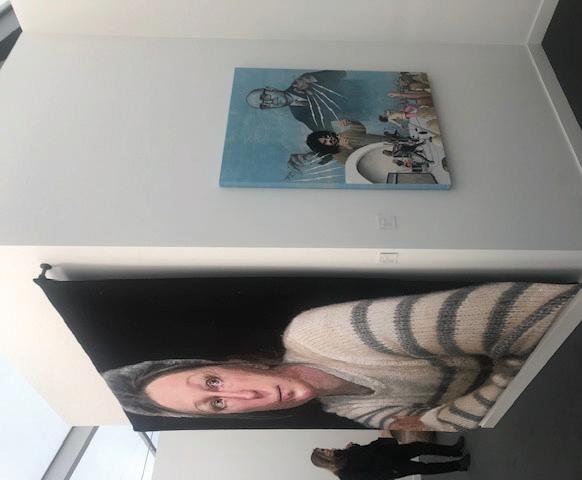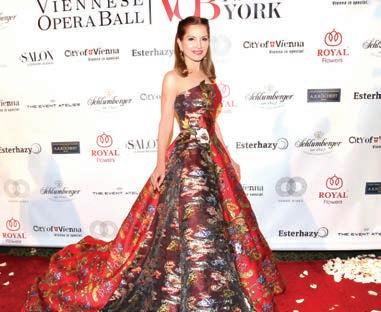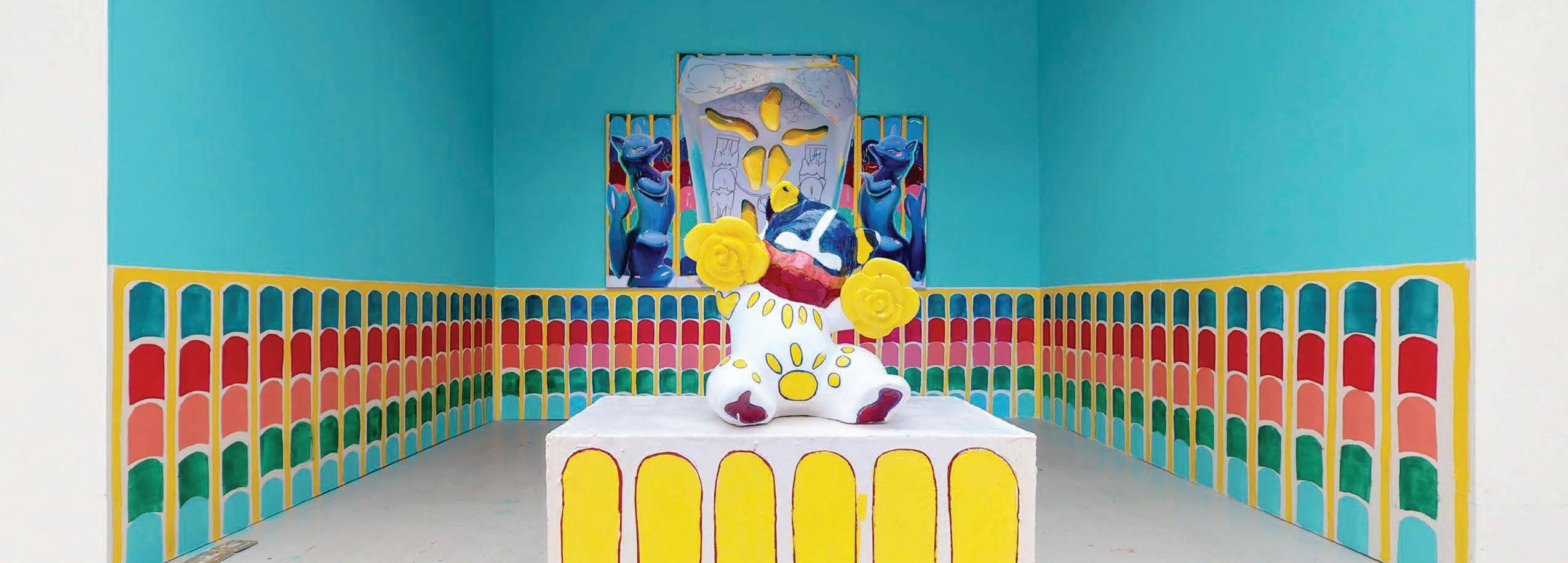
13 minute read
THE SUPREME VALUE OF THE PEANUT
The Supreme Value of the Peanut QUICKFIRE ARTIST SERIES
INTERVIEW WITH SPANISH ARTIST ANA BARRIGA
BY RACHEL VANCELETTE
Spanish artist Ana Barriga is reaching new heights with her current solo exhibition and continues to take the international art world by storm. Noted celebrities, art collectors, and even top-tier footballers are collecting and snapping up her artwork- resulting in a sold-out sensation! The artist caught the eye of famous Real Madrid player Sergio Ramos who bought a series of paintings on the opening night. For her solo show at Kristin Hjellegjerde’s gallery in London Bridge, the artist presents a new series of imaginative paintings that visualize everyday life in the “peanut community.” Through these surreal scenarios, Barriga pokes fun at real-life conventions, offering the viewer the opportunity to both laugh at and question the foundations on which civilizations are built.
Her use of humor, play, and irony to allow unpredictable situations has attracted a newfound cult following. The artist takes children’s toys,

decorative objects, or everyday objects, which she paints, breaks, mutilates, and assembles as if she was playing with them with herself. The painting process of erasing, repopulating, modifying, and intervening with spray paint allows her to vandalize her own paintings—the “vandalism” within her creative process continues as an ongoing intervention for the artist. Barriga continues to look to provoke new conversations and enrich audiences with unique histories, playfulness, and sarcasm, keeping us all wanting more.
Your artistic practice includes the use of found objects such as ceramics, toys, unique objects which appear in many of the narratives in your painting and sculptures. The objects appear to present themselves with precise cultural significance and particular storytelling. It is stated there is an intertwining of semi-formal conversations within the paintings noted as a sort of “vandalism towards your own painting”, can you speak to these new-found concepts? When I paint I don’t look for refuge in what I already know or in where I feel safe, I could say that I want to find excellence without knowing very well what it is about when we talk about painting. I understand painting as a form of instinctive expression through which I represent my own way of thinking or my surroundings. I guess it’s a way of channeling the things that I worry about daily. I use playfulness and sarcasm– to play down the relevant issues that I usually talk about, such as sexuality, religion, or politics. What I call excellence is linked by a feeling of dismay, it’s a bittersweet feeling of sacrificing my own painting. When I outrage my own paintings with spray paint or color markers, conceptually, it starts from the choice of motifs and the manipulation of them in the studio. I collect society’s best wastes; I look for ugly and rare objects that I find unexpectedly appealing and interesting to me. When these objects arrive at the studio, I heal them, I give them group therapy, I re-educate them, I clean them, I take them to private schools and when I think they are ready to be back to real life, I paint them, and then someone comes and re-paints over it with spray, that’s the way things are.

As it says in the title of David Barro’s text written for my exhibition ‘Animals to Gods’ at the CAAC, ‘’without cruelty, there is no party’’.
For executing this particular painting series for the current exhibition at KH, you noted you have been collecting many of the objects from flea markets over time. How do you select and find these objects?
At first, I take the role of a hunter who shoots to collect an array of objects that awaken my curiosity. When I see something that attracts me, I shoot to get it; it’s a matter of instinct and aptitude. Then I take them to the studio, and I get acquainted with them. During this process, I’m aware of all the unexpected dialogues that arise between the different objects, and I provoke new ones. I mutilate these objects, unique expressions. Can you speak to the characters and scenes to which you portray in the paintings?
I assemble them, cut and paste, and do everything I can to generate new ideas. When I think a composition combines conceptual and aesthetics parameters, I photograph the still life, I manipulate the photography and project the image on the wall. Once the image format is decided, I start painting. This process can be repeated randomly throughout the production of the image. Everything is in a transformation and changing process so that I can erase the picture, the photograph, change the still life, or mutilate it and restructure it. The production time is usually prolonged. From the acquisition of an object until I intervene and use it, months and even years may pass.
Many of these everyday objects are presented almost like time capsules in your painting, evoking rare cultural contradictions and The pictures presented in this project inquire into the question of civilization’s history. Still, far from questioning the historical account established or raise suspicions about the documentary power of historical images. These pictures try to depict an imaginary civilization developed around a mythical foundational element: peanuts. Extracting the poetics hidden in the every day through the secondary object allows us to criticize contemporary society and start a research that explains the world through metaphors: explore the truth hidden behind the images—starting from objects of popular culture, which I bought in different flea markets. These objects can be considered a waste of our society; I tried to recreate the main elements of a fictional civilization that, although it seems to be completely different to our society, it could be a distorted reflection of it. The supreme value of the Maní (peanut) culture, the sacred, is represented by a banal object: members of the Maní civilization make sacred an inconsequential object.
The artwork “Bésame mucho” depicts a female figure cornering a peanut to kiss it or have sex with it. In the picture “El Manisero” two dogs are represented, they are the ones who found the civilization, and in instead of reserving it, they ate the peanuts, so they appear with their tongues and half of the body yellow due to the passage of the peanut through their body.
In “Caserita don’t leave me” we can see the tomb of the peanut, the corpse of the peanut is buried in a cross shape as a sign of sacrifice in the Catholic religion. Also, guards are depicted eating the peanuts they are supposed to protect. The scenes are full of humor and irony; they refer to the real world and invite us to think about our own interpretations of what sacred means.
The layered metaphors, irony, humor, and seduction of your artworks have captivated the London audience. The use of a rare bright color palette and playful scenes bring forth both many contrasts and contractions. What do you hope the viewers will leave with when visiting your exhibition?
that makes him think about what he is seeing, and about how he is viewing it, questioning his perception. Awaken a fun localism through the power of the viewer’s own experience. Inviting the visitor to enter into my imaginary world trying to discover a secret, which is not a secret about painting or about art itself, but a secret about life itself.
What inspires you?
My surroundings and my experiences. We live surrounded by great scenarios that, in my opinion, maintain similarities with vanitas, a painting genre that since the Renaissance has served as a pretext for artists to build realities and make the viewer move around the scene. I’m talking about the still life that was introduced
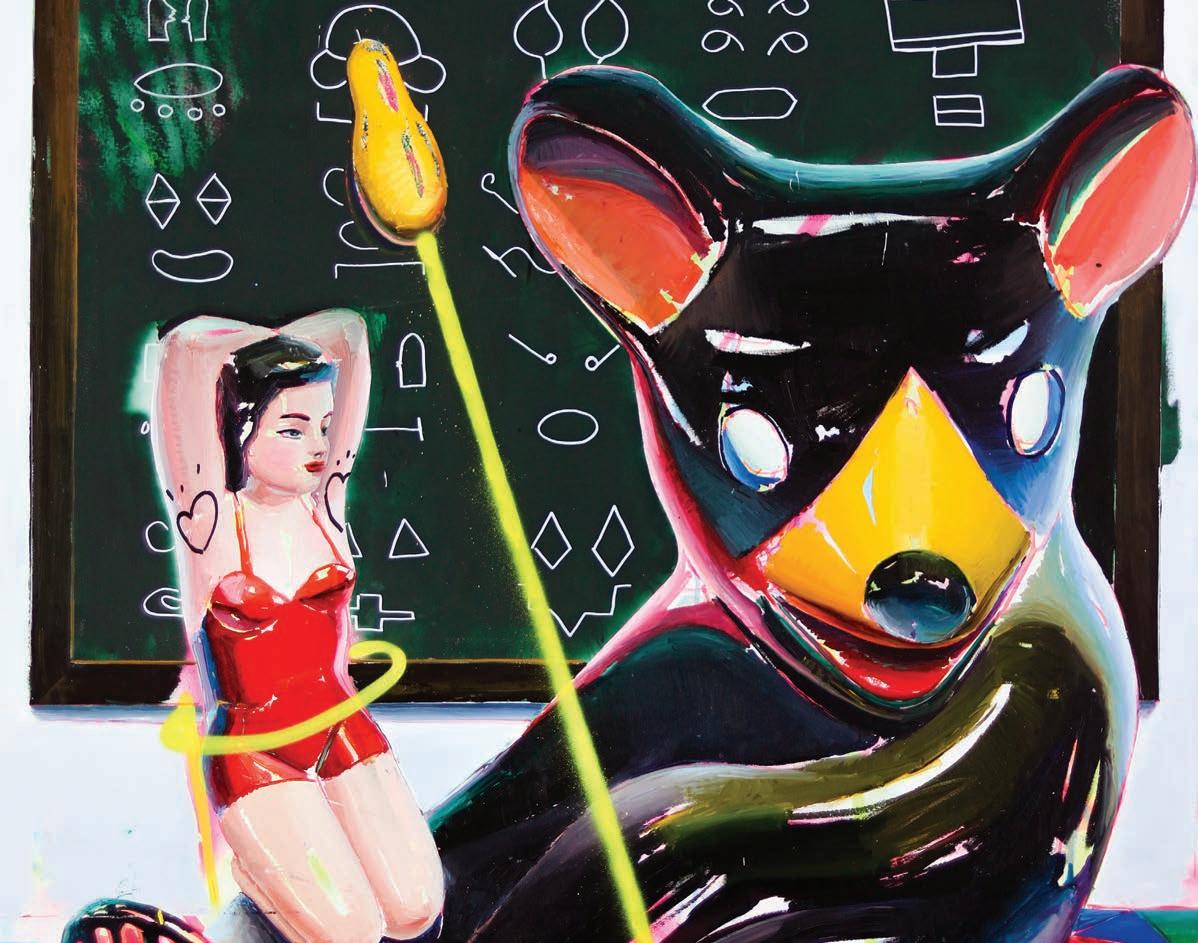
first in the picture as a secondary resource, that can be seen for example in ‘’Christ in Marta and María’s house’’ (1618) by Diego Velázquez, and especially in ‘’The Ambassadors’’ (1533) of Hans Holbein the Younger. It helped to bring the observer through countless secondary objects that talked about the reality of characters and their time. Through allegories and symbols, they told us about the main character’s life and their stories. Subsequently, in the Baroque period, it became one reason in itself, we just have to remember Sánchez Cotán or Zurbarán. Today, these metaphorical aspects are desacralized, any everyday situation could be interpreted as a still life, it’s just a matter of applying a kind of zoom-in with our gaze to isolate certain aspects of reality. What advice would you give to a young artist of today?
Look at is as “the bug.” “The bug” refers to something you have inside, and that for some reason is always hungry, it is insatiable. I wouldn’t know how to explain it, but maybe it could be some kind of mystical belief, our religion, or what we call God. It means that in what you believe in and what you do passionately without knowing the consequences or aftermath, something that does not have form, shape, weight, nor smell, but at the same time is something that awakes all your senses and makes you smile. If the bug is more substantial than 10 kg, keep going, do not hesitate. If it does not come to this, look for another thing, you will surely find another kind of bug to join you and enjoy life.




For more: Gallery: https://kristinhjellegjerde. com | Selected solo shows include Maní, Kristin Hjellegjerde Gallery, London (2020); De Animales a Dioses, Centro Andalúz de Arte Contemporáneo, Seville, Spain (2019); Charleston, Lambada y Perreo, Galería BIRIMBAO, Seville, Spain (2018), Ni Trono Ni Reina, Galería Yusto Giner, Málaga, Spain (2017), El Hombre y la Madera, Galería BIRIMBAO. Seville, Spain (2015). Selected group exhibitions include BMural, Barcelona, Spain (2019); KNOTENPUNK Festivas, Affenfaust Gallery, Hamburg, Germany (2019); Universes, Imola, Italy (2018); MACO, México (2018); ARCO, Madrid, Spain (2018); Ensoñaciones, SC Gallery, Bilbao, Spain (2017); El aire que nos llega, Galería Birimbao, Seville, Spain (2017); Estampa, Galería Yusto Giner, Málaga, Spain (2016); CREADORES 2016, La Térmica, Málaga, Spain (2016); Málaga Crea, CAC de Málaga, Spain (2016); Gramática y bricolaje, Yusto Giner, Malaga, Spain (2016); NEIGHBOUR III, CAC de Málaga, Spain (2016); BEAUTY, MAD Antequera, Spain (2016); and ON COLOR, New Spanish Con- temporary Painting, SCAN, 123 Pop-up Gallery. London (2016). Barriga has received numerous prizes. Most recent include Void projects, Miami (2018); Generaciones, Fundación Montemadrid, Casa Encen- dida, Madrid (2018); XIX Certamen Nacional de Pintura (2018); DKV Prize, Feria de Estampa, Galería T0, Madrid (2017); International Painting Prize Focus, Seville (2017); XXIII Certamen Artes Plásticas Universidad de Sevilla, CICUS, Seville (2017).
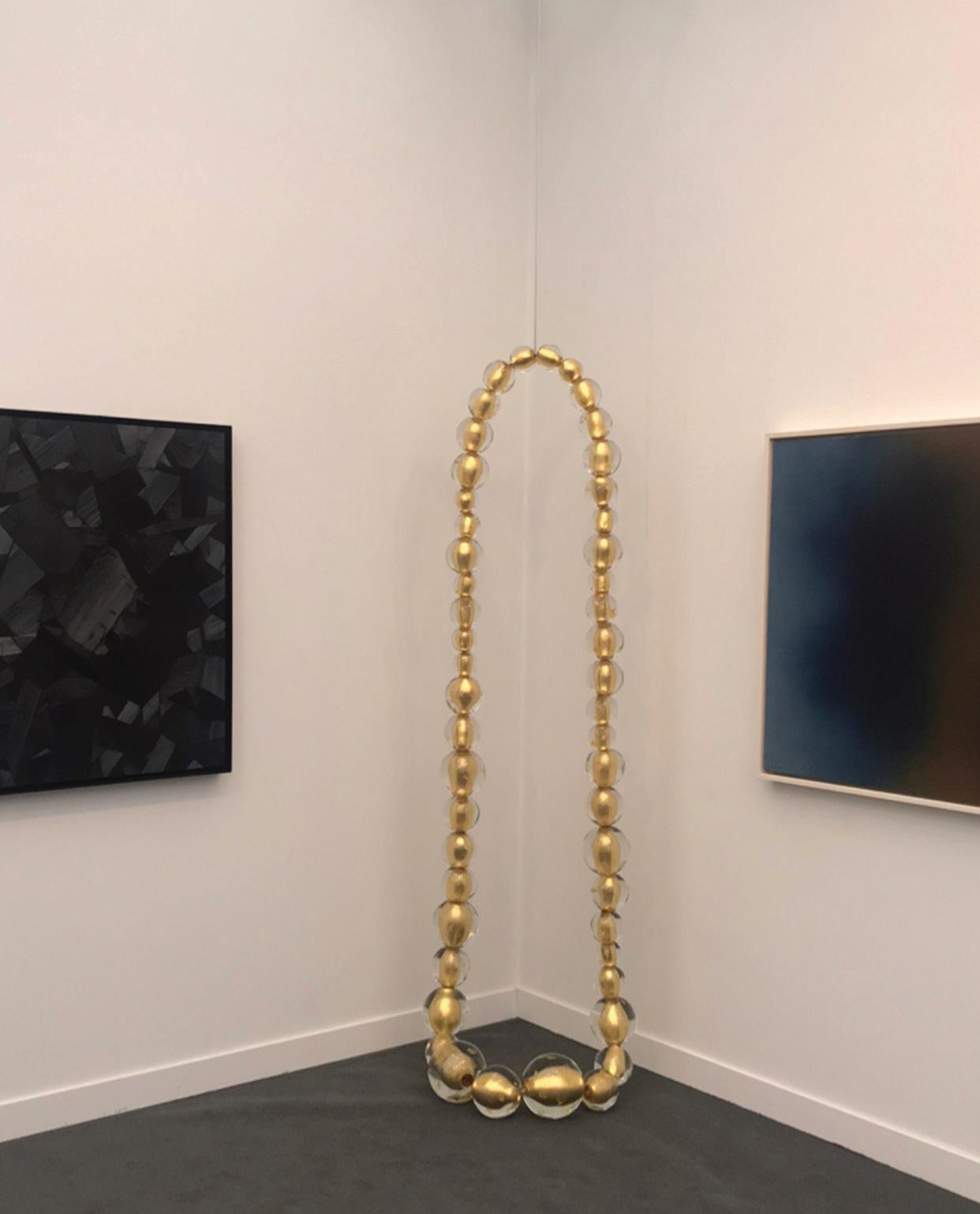
LA FRIEZE ART FAIR 2020 ARTFAIR SNAPSHOT
LA Frieze Art Fair certainly was full surprises with the glitterati and international art collectors seeking the latest VIP ticket for the 2020 edition. Sold out tickets before it even opened and just in time for Valentine’s Day shopping, the second edition of the LA edition presented more than 70 galleries from around the world, showing the latest in
A SOLD OUT SENSATION
BY RACHEL VANCELETTE
contemporary artworks by both emerging and established artists. Many artworks were rumored to have presold before the doors even opened and immediately snapped up at the opening hour! Art advisors, art lovers, and art collectors were running down the aisles to capture the first view and the competition was certainly on for the latest contemporary artwork. The gigantic tent placed on the famous Paramount Picture Studios greeted everyone with newfound energy and excitement. The takeover of Paramount Studios backlot, which is set as New York streets, was, in essence, straight out of a movie! Curated by LACMA head of contemporary art Rita Gonzalez and Vincent Price Art Museum director Pilar Tompkins Riva, the emphasis on Latino and black artists for Frieze Projects 2020 presented 16 performances running throughout the fair.


The invitation-only VIP preview drew notable attendees such as A-Rod and J. Lo, Leonardo DiCaprio, Charlize Theron, singers Usher, and The Weeknd, actor Billy Zane, Amy Poehler, Diplo, James Corden, and tennis star Maria Sharapova. Kendall Jenner snapped up a work by James Turrell for $750,000 US, rumors swirled she was encouraged by Kayne West who is a great friend of the artist who continues to inspire him.

The MatchesFashion event served up the new colorful Birkenstock’s 1774 collection and became the buzz on opening day. The showroom was full of bright blues and yellow Birkenstocks one could purchase right on the New York lot! The acclaimed artist and director Sam Taylor-Johnson shared her exclusive selections for the curated event noting how moving to L.A. changed her style. Alfie Allen, Vampire Weekend’s Enra Koenig, designer Jeremy Scott, Rashida Jones, and more all mingled with Maison Ruinart champagne in hand! It goes to say fashion x art continues to be the perfect pair!
Reported by Artnet: Here is the snapshot of what sold!
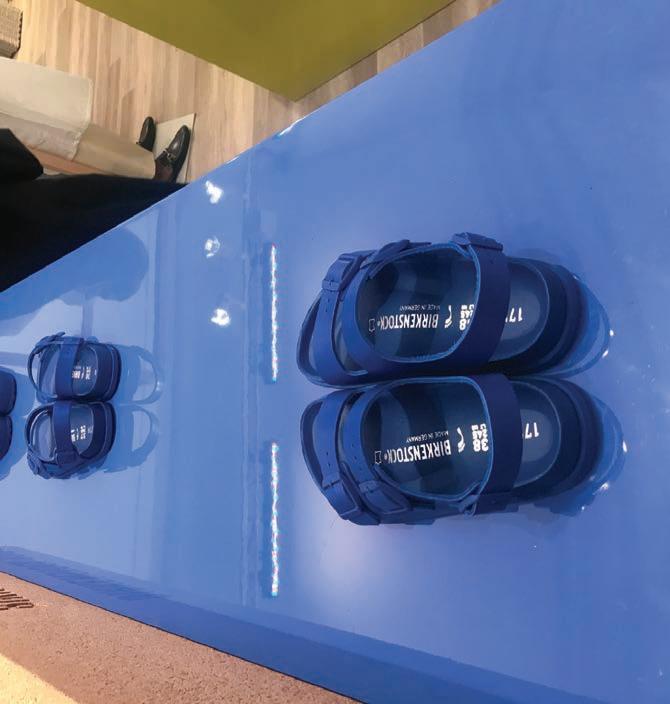
$3.7 million: A painting by Keith Haring at Gladstone Gallery $2 million: Neo Rauch, Aprilnacht (2011) at David Zwirner $1,350,000: Robert Rauschenberg, Bowery Parade (Borealis) (1989) at Galerie Thaddaeus Ropac $866,000: Georg Baselitz, Schwarzes Pferd [Black Horse] (1986) at Galerie Thaddaeus Ropac $650,000: A painting by Carroll Dunham at Gladstone Gallery $600,000: A new painting by Mark Grotjahn at Blum & Poe $550,000: Alex Katz, Ada (2018) at Galerie Thaddaeus Ropac $500,000 each: Two new paintings by Jonas Wood at David Kordansky $420,000: Tracy Emin, There was only The Truth (2019) at White Cube $350,000: A work by Oscar Murillo at David Zwirner $350,000: Sterling Ruby, WIDW at Xavier Hufkens $350,000: Stanley Whitney, Angels on Sunday, Maids on Monday (2019) at Lisson $310,000: A work by Mary Weatherford at David Kordansky $254,000: Imi Knoebel, Bild 06.03.2015 (2015) at White Cube
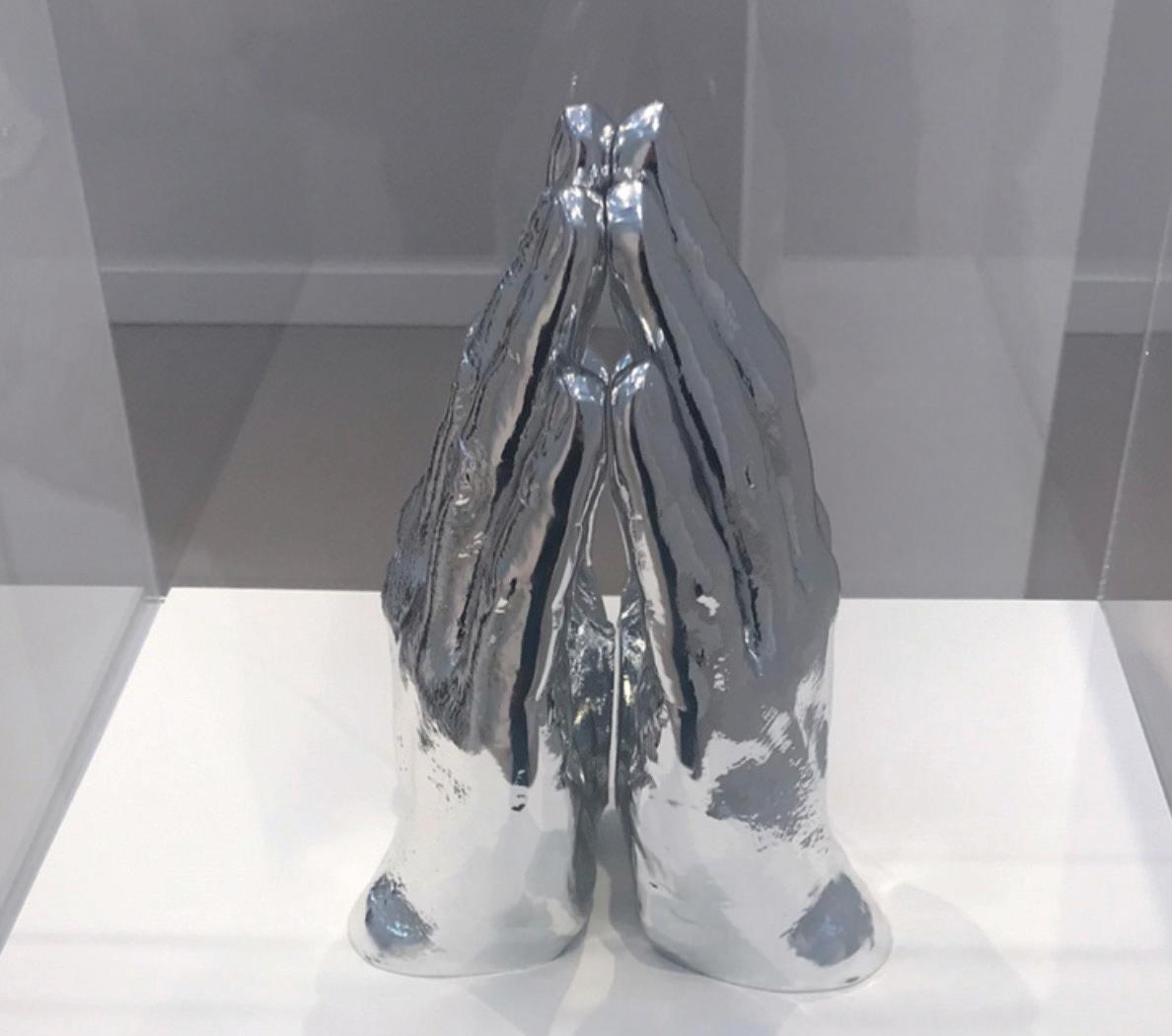
$200,000: A painting by Harold Ancart at David Zwirner $200,000: A painting by Lucas Arruda at David Zwirner $175,000: A painting by Ugo Rondinone at Gladstone Gallery $145,000: Allora & Calzadilla, Electromagnetic Field (2019) at Lisson $120,000–$1 million each: Five paintings by Lisa Yuskavage at David Zwirner $100,000: A painting by Richard Aldrich at Gladstone Gallery $100,000–$120,000 each: Several paintings by Henry Taylor at Blum & Poe
$100,000: A Josh Smith painting at Xavier Hufkens $100,000: Ali Banisadr, The Serpent and the Key (2019) at Galerie Thaddaeus Ropac $85,000–$495,000 each: All five of Avery Singer’s new works shown at Hauser & Wirth $75,000: A painting by Anicka Yi at Gladstone Gallery $52,000: Darren Almond, Night Snow at Tsukahara (2020) at White Cube $50,000: A painting by Thomas Houseago at Xavier Hufkens $16,500–$18,500 each: Gabriela Sanchez’s works at Charlie James $14,000–$30,000 each: All of painter Calinda Rawles’s works at Various Small Fires Artfair Snapshot Tips:
www.frieze.com www.matchesfashion.com www.artnet.com www.vanglobalart.com
For more of the latest Globetrotter Series: Instagram @rvancelette

